Contents
Guide

Igor Mel'uk
Ten Studies in Dependency Syntax
Trends in Linguistics Studies and Monographs

Editor
Chiara Gianollo
Danil Van Olmen
Editorial Board
Walter Bisang
Tine Breban
Volker Gast
Hans Henrich Hock
Karen Lahousse
Natalia Levshina
Caterina Mauri
Heiko Narrog
Salvador Pons
Niina Ning Zhang
Amir Zeldes
Editor responsible for this volume
Chiara Gianollo
Volume 347

ISBN 978-3-11-069470-3
e-ISBN (PDF) 978-3-11-069476-5
e-ISBN (EPUB) 978-3-11-069481-9
Library of Congress Control Number: 2020941531
Bibliographic information published by the Deutsche Nationalbibliothek
The Deutsche Nationalbibliothek lists this publication in the Deutsche Nationalbibliografie; detailed bibliographic data are available on the Internet at http://dnb.dnb.de.
2021 Walter de Gruyter GmbH, Berlin/Boston
www.degruyter.com
Acknowledgments
 | This book would not exist if there were not several extraordinary people who have helped me at different stages of my research . |
The first to be named is, of course, Lidija Iordanskaja, my Reader in Residence; she read and reread every piece in the volume many times, from the first sketch to the last proofs.
The second to be named is David Beck, without whose advice, suggestions and correctionsover many years!I could never have reached the results that I present here. He has been a severe critic and an efficient editor of all my texts.
Then come three colleagues and friends, with whom all my texts were discussed and who hunted down many mistakes and ironed out countless inconsistencies: Jasmina Milievi, Alain Polgure and Elena Savvina.
And finally, Margarita Alonso Ramos, Jurij Apresjan, Igor Boguslavskij, Alexander Grosu, Leonid Iomdin, Sylvain Kahane, Franois Louis, Sbastien Marengo, Simon Mille, Nikolaj Pertsov, Rafal Poiret, Leo Wanner and Anton Zimmerling went through different chapters of the volume, helping me with their judicious remarks to significantly improve the presentation. Thanks to the several constructive suggestions by the Anonymous Reviewer (of the Publisher) I was able to better organize the volume.
Chiara Gianollo, Frank Junghanns, Barbara Karlson and Birgit Sievertthe de Gruyter team that worked on this bookpulled off a miracle commensurable with the proverbial transformation of water into wine: they turned my uncouth manuscript into this beautiful volume.
Very special thanks are also due to the people who have offered me their consultations and advice concerning various languages:
| Acehnese: | Mark Durie |
| Amele: | John Roberts |
| Basque: | Georges Rebuschi |
| Chinese (Mandarin): | Haitao Liu, Jian-Yun Nie, Ruochen Niu, Rafal Poiret |
| English: | David Beck |
| Georgian: | Zurab Baratashvili |
| Hindi: | Omkar Koul |
| Korean: | Chai-Song Hong, Mi-Hiyun Kim, Seong-Heon Lee, Geun-Seok Lim, John B. Whitman |
| Tagalog: | Jean-Michel Fortis |
| Tongan: | Yoko Otsuka |
I did my best to take into account my colleagues proposals, and I thank them from the depth of my heart. It goes without saying that I am alone responsible for the final product.
Symbols, abbreviations and writing conventions
All the relevant notions and formalisms cannot be explained here; the reader is kindly invited to consult the Glossary (pp. ) and the monograph Meluk 20122015.
All interlinear glosses in the examples are literal; two English words that correspond to one foreign form are united by a dot: Rus. boli of.pain.
Symbols
| | C | condition part of a linguistic rule |
| L | a particular language |
| L | a particular lexical unit |
| L | a particular fictitious lexeme (in the deep-syntactic structure) |
| L(X) | a particular lexical unit L expressing the meaning X |
 | is the syntactics of lexical unit L, being syntactic   features features |
| L L n | a particular idiom L L n |
| L sem L | L directly depends on L semantically |
| L synt L | L directly depends on L syntactically |
| LL | L indirectly depends on L |
| L L | L and L are co-referential (= L and L have the same referent) |
| NB | important but tangential (= logically not necessary) information |
| r | a particular surface-syntactic dependency relation |
| R | Rheme (communicative value) |
| R DSynt | deep-syntactic Rheme (communicative value) |
| R Sem | semantic Rheme (communicative value) |
| a particular semanteme |
| a particular semanteme that is communicatively dominant within the semanteme configuration it belongs to |
 | a particular configuration of semantemes |
| T | Theme (communicative value) |
| T DSynt | deep-syntactic Theme (communicative value) |
| T Sem | semantic Theme (communicative value) |
| they | the expression they represents the indefinite-personal pronoun, such as they (in the sentence In Yorkshire they say eh whenever they dont understand something ), Fr. on, Ger. man |
| { x i } | a set of elements x i |
| x | x, a feature of syntactics of a linguistic sign |
| x , y , , z | an ordered set of elements x , y , , z |
| X | a linguistic expression |
| * X | an ungrammatical linguistic expression |
| ? X | an incorrect or dubious linguistic expression |
| # X | a pragmatically deficient or semantically anomalous linguistic |
| expression |
| (X) | an optional X |
| [X] | 1) government pattern |
| 2) additional explanation |
| X Y | Y, a variant of X |
| X | Y | Y, conditions of use of X |
| X Y | correspondence between linguistic entities X and Y of two adjacent |
| representation levels = X corresponds to Y and vice versa |
| X | the context X of a linguistic rule |
| X + Y | Y follows X immediately |
| X + + Y | Y follows X with a possible gap |
| X | a presupposed semantic component X |

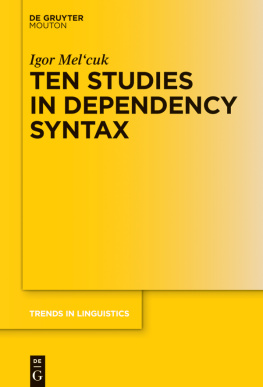

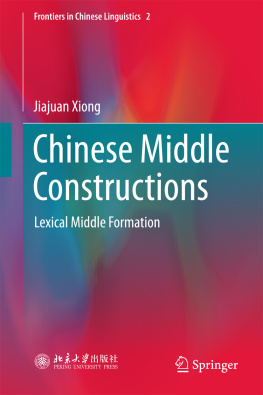
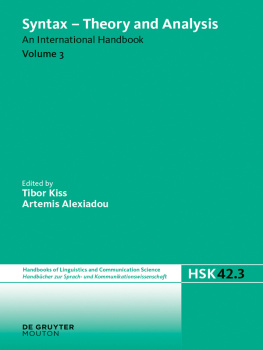
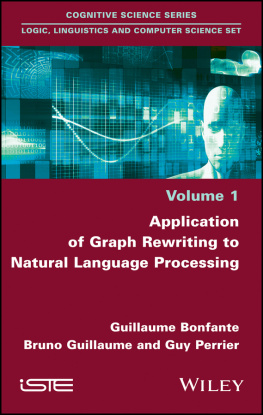
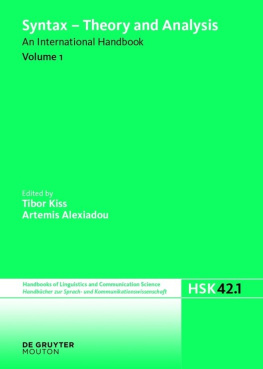

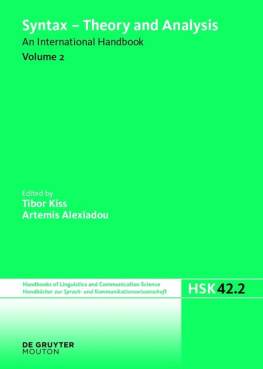
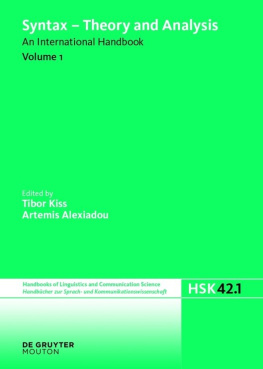
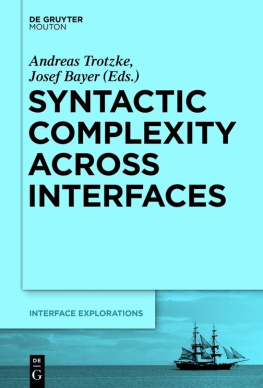






 features
features